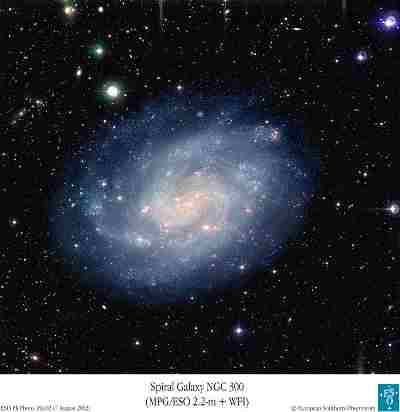
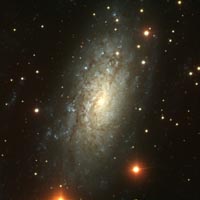

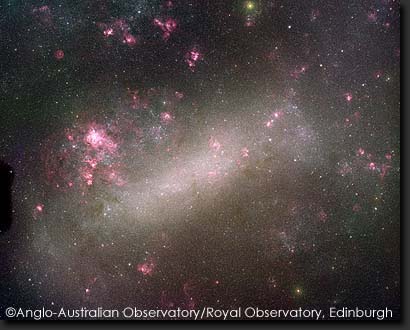
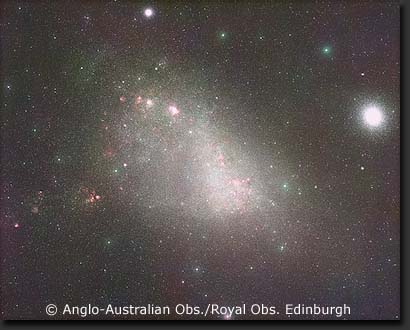
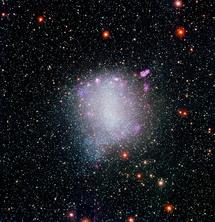
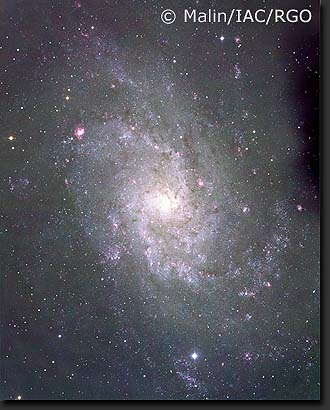
|
Figure 18: Besides the Milky Way and the Andromeda galaxy (M31), M33 is the third large spiral in the Local Group, seen almost face-on. It is this characteristic that predestines this system for detailed studies of galactic properties (e.g. abundance gradients) as a function of galactocentric distance. Vigorous star formation takes place along the pronounced spiral arms, giving rise to numerous HII regions powered by massive, hot stars. As a consequence, a large number of blue supergiants is also found throughout this galaxy. |